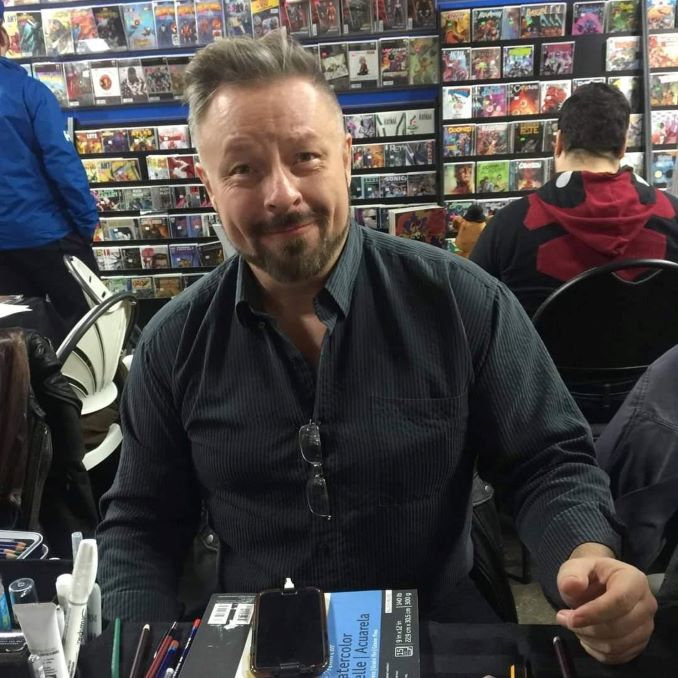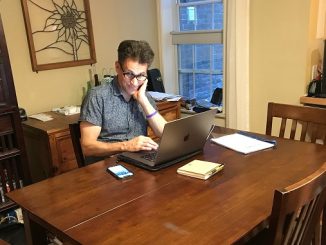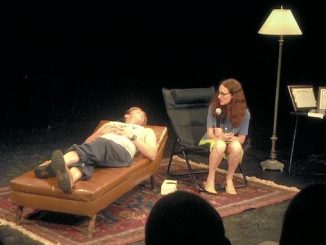You’ve probably become pretty accustomed to the AI-generated art popping up on your social media. You know the ones- your friends might change their profile picture to a portrait of them looking like an elf or anime character. They look like they’ve been drawn by a real artist with a talent for fantasy portraits.
But they’re not. They have been generated by a program designed to take your selfies and turn you into a caricature of yourself. It can be pretty amazing to see these portraits for the first time as every paint stroke looks real and with an almost perfect likeness to the actual person.

But how does a computer program do this?
How it works, is through a system called Stable Diffusion. So I am not techy, but from the very little I know, what this program does is collect images from all over the internet and learns how to produce an image independently if you give it some simple instructions on what you want. So, you give a bunch of selfies to the company and say how many portraits you want and in what style and a few hours later, you have your custom-made AI-generated art.
Pretty cool right?
Not really.
The problem with this whole scenario is how the program learns to produce an image. In order to teach the AI to do this, it has to use real images from real artists and then replicates bits and pieces of the actual art to then spits out what is essentially fake art.
The images that it can produce might come from the actual program, but without stealing from artists, it would have nothing.
Let’s take a made-up example to explain just why this is so horrible. You decide you need a piece of art for your living room, but don’t really know much about art so decide to use one of these AI-generated art companies to get exactly what you want. You are asked a few simple questions like what colours you want, what type of scenes you enjoy and what style you like. You say you want something that will have blue, green and yellow in it, that you enjoy night sky scenes in the post-impressionist style.
You wait the few hours required and when you go back to your computer you’re amazed at what you see. The AI has produced what is essentially Starry Night by van Gogh, but the shades are a bit lighter.
This is what the technology is capable of doing and to me, that is scary. And this is not even the worst of it as who wouldn’t want a van Gogh replica for very little money?
But what if it was a non-famous local artist that had been copied? Would you feel comfortable not paying them for their work?
Well, essentially for all those people who have used those AI portrait programs, that is what you’ve done.
To get a better handle on this issue, I talked to local freelance artist/writer Richard Pace. Pace is a comic artist who has been producing high-quality comic book art for over 30 years.
Pace first started hearing about AI-generated art this past spring and thought it was fascinating imagery. He even signed up to play around with the program, not knowing exactly how the program worked. He found out a few months later how the art was generated and said that “all the appeal and charm of this toy…fell away.”
For artists like Pace, what these programs are doing is simple: it’s stealing their work. He explains that “There is no discernment in the programming. They’ll steal willingly because they don’t have any morality or any overriding guidance not to steal completely.” Meaning there is no protection for the artists and people can potentially buy their artwork unknowingly and absolutely no money will go to the artist.
Though Pace’s business hasn’t been affected yet, it will not be long until it could be. This is the first year of AI-generated art and there are already book covers being designed by AI, meaning no need to spend money on human artists. What worries Pace is that the technology is only going to get better, and we could end up in a world where hundreds of artists, graphic designers, illustrators, writers, musicians, and photographers could become obsolete.
So how do we stop this from happening? Pace is urging people to not only stop using these programs but also urge the government to legislate the use of other people’s work for AI-generated art. “We need politicians to understand that this will cause grievous harm to our culture” Pace explains. Without legislative protections for artists from AI, there is no way for artists to protect their work and make money.
Because let’s be real- who is going to spend $100 on a piece of art if you can spend $20?
***
Looking for some real art from a real artist? Find Richard Pace on Instagram @richard_pace.




